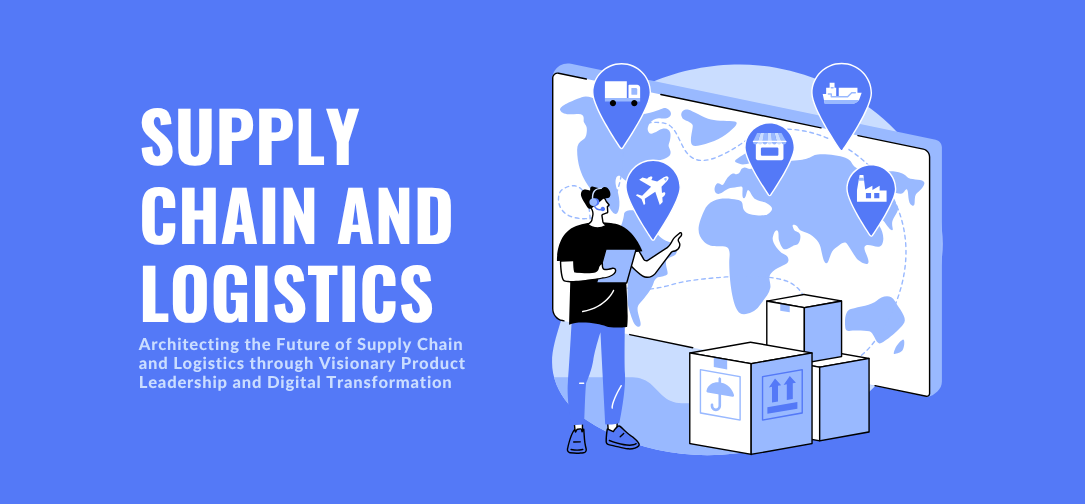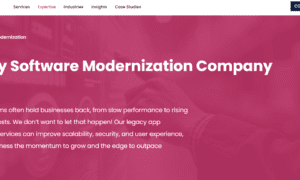The global supply chain and logistics (SC&L) sector is navigating a period of unprecedented transformation. This shift is accelerated by the imperative for enhanced efficiency, real-time visibility, and greater resilience in the face of dynamic market demands and disruptions. This evolution is not merely about adopting new technologies but involves a fundamental rethinking of operational processes and business models.
The widespread commitment to this new paradigm is evident, as 93% of organizations surveyed in 2023 reported having already adopted or planning to adopt a “digital-first” strategy. At the vanguard of this transformative wave is Ting Huang, an exceptional product leader whose career, spanning over a decade, has been distinguished by driving innovation at the critical intersection of technology and SC&L for global titans such as Amazon, Microsoft, IBM, and currently, FedEx Dataworks. Her work exemplifies leadership in digital transformation and product management, showcasing a profound expertise in leveraging innovative product strategies and advanced technology adoption to redefine the SC&L landscape.
Throughout her distinguished career, Huang has consistently delivered products that address complex business challenges, forge new revenue streams, significantly improve customer experiences, and generate substantial cost savings. Currently, as a Product Manager Lead at FedEx Dataworks, she is instrumental in developing product strategies designed to enhance customer experience and propel digital transformation, thereby enabling new capabilities for the logistics giant.
Her unwavering focus on meticulously aligning product roadmaps with overarching business goals has been pivotal in helping FedEx enhance operational efficiency and deliver impactful solutions across a multitude of functions. Before her tenure at FedEx, Huang served as a Senior Program Manager at Amazon, where she spearheaded initiatives to optimize product offerings and curtail transportation costs, leading to marked improvements in customer satisfaction and saving millions of dollars for the company.
Her role as a Program Manager at Microsoft saw her working in close collaboration with strategic partners to develop new products and align product roadmaps with customer needs, thereby driving measurable advancements in product quality and supply chain efficiency. The convergence of Huang’s extensive experience at premier technology firms and a leading logistics company uniquely positions her not merely as an implementer of digital solutions but as a strategic architect at the vital nexus of technological innovation and SC&L operational excellence.
This blended expertise is particularly crucial in an environment where, although 70% of companies have initiated a digital transformation in their supply chain and logistics operations, the ultimate success of these complex initiatives often hinges on leaders who can effectively bridge the gap between technological possibility and operational reality.
Huang’s specialization lies in Product Development and Management within the SC&L domain, with a particular emphasis on the application of advanced data science and machine learning—a focus underscored by her PMP certification. The AI in logistics and supply chain management market is witnessing explosive growth, with projections indicating an expansion from $24.19 billion in 2024 to an astounding $742.37 billion by 2034.
This trajectory highlights the critical importance of Huang’s expertise. Indeed, the potential of AI in logistics and supply chain management is significant. Her proficiency in this rapidly expanding field positions her as a leader shaping the future of the industry.
Huang’s exceptional abilities are further demonstrated by a collection of prestigious awards: the IBM Customer Delight Award (2012), a Dean’s Scholarship (2020), recognition as a CEL Scholar (2021-2022), and designation as a Bauer Leadership Fellow (2022). Each of these accolades reflects a consistent and high level of excellence. The IBM Customer Delight Award celebrated her brilliant customer engagement skills and her delivery of superior quality service.
The Dean’s Scholarship, from the highly-ranked Olin Business School at Washington University in St. Louis, was conferred in recognition of her potential to make an outstanding addition to the Olin community, highlighting her track record of responsible leadership and a desire to drive societal and economic impact. As a CEL Scholar, selected from the entire business school for exceptional leadership and subject matter expertise, she acted as a crucial liaison, fostering innovative learning with real-world impact.
Finally, her designation as a Bauer Leadership Fellow, a program awarding only the top 1% of selected individuals, signaled her advanced leadership capabilities and commitment to Values-Based, Data-Driven™ leadership. This diverse array of honors, spanning customer satisfaction, academic and leadership potential, and values-based leadership, collectively paints a picture of a multifaceted leader whose technical acumen is powerfully complemented by robust interpersonal skills, a strong ethical compass, and an unwavering commitment to creating broader impact.
Such holistic capabilities are increasingly indispensable for navigating the complex digital transformation initiatives that involve not just technological shifts but also significant human and organizational change, a common area where many supply chain digitization initiatives face challenges.
Aligning product roadmaps with business goals
Aligning product roadmaps with overarching business goals is a cornerstone of effective product management, especially within the dynamic context of digital transformation. Huang’s approach to this critical task is characterized by a strategic, data-driven, and cross-functional methodology. She emphasizes that successful alignment begins with a profound comprehension of an organization’s strategic imperatives and the nuanced pain points of its customers.
“The first step in aligning product roadmaps with business goals is developing a deep understanding of the company’s strategic priorities and customer pain points,” Huang states. “For example, at FedEx, a key business objective is to enhance e-commerce logistics through AI-driven solutions.” This understanding allows her to focus product development on initiatives like predictive analytics models aimed at improving delivery accuracy and reducing fraud, both of which directly contribute to FedEx’s goals of operational efficiency and heightened customer satisfaction.
The consistent application of such a foundational framework across diverse corporate environments suggests a universally effective strategy for product roadmap alignment, rather than a tactic confined to a specific company culture. This adaptability is a clear indicator of seasoned leadership, capable of navigating the unique priorities of different organizations while maintaining a core strategic discipline.
A critical component of Huang’s strategy is the definition of clear, measurable metrics for success for every digital transformation initiative. At Amazon, when she led the global launch of an ML-based order capacity planning feature across more than 200,000 locations, she meticulously defined KPIs such as cost savings in transportation, daily order drop rate, and daily re-routing rate. Continuous monitoring of these metrics ensured that the product roadmap remained steadfastly aligned with Amazon’s broader objectives of operational efficiency and scalability.
This practice of explicitly linking product initiatives to core business objectives demonstrates a mature understanding that technology serves as a means to achieve business ends, rather than being an end in itself. This business-centric perspective is vital for driving tangible value, aligning with the principle that effective digital transformation plans must be rooted in organizational goals and feature measurable outcomes. In the SC&L sector, KPIs are essential for tracking progress and demonstrating success.
Furthermore, Huang underscores the indispensable role of cross-functional collaboration and securing stakeholder buy-in. “Digital transformation requires strong alignment across engineering, operations, data science, and executive leadership,” she explains. “At Microsoft, I worked closely with engineering teams and suppliers to optimize supply chain operations, resulting in over $10MM in annual profit and $1MM in cost savings.” These significant achievements were realized by aligning her product roadmap with Microsoft’s strategic imperatives for cost reduction and market competitiveness, crucially supported by buy-in from leadership and cross-functional partners.
In the rapidly evolving digital landscape, product roadmaps must be flexible and adaptive. Huang champions an agile and iterative approach to roadmap development. Her work at FedEx with FDX Labs, for instance, has involved rapid prototyping and iterative testing with industry leaders, allowing for the incorporation of real-time customer feedback directly into the roadmap.
This agile methodology accelerates innovation while ensuring that solutions remain aligned with FedEx’s long-term vision for digital commerce and supply chain intelligence. Agile practices are fundamental to navigating digital transformations, enabling organizations to iterate faster and respond effectively to changing conditions, a necessity in SC&L where real-time data and adaptability are critical for success.
Finally, Huang ensures her product roadmaps artfully balance immediate, tangible deliverables with ambitious, long-term transformation goals. Her work on anti-fraud solutions at FedEx, for example, is not only focused on immediate fraud reduction but also strategically supports the broader industry movement towards more secure, AI-powered logistics solutions. This sophisticated grasp of managing innovation within large organizations, blending agile development for quick wins and learning with a steadfast focus on long-term strategic direction, prevents reactive, short-sighted product decisions and fosters sustainable transformation.
By consistently integrating strategic alignment, data-driven decision-making, and robust cross-functional collaboration, Huang has successfully shaped product roadmaps that deliver both immediate business impact and foster long-term digital transformation, translating technological advancements into concrete business value.
Integrating data science models in e-commerce
Integrating sophisticated data science models into complex e-commerce platforms presents unique challenges, particularly when aiming to enhance customer experience through personalization. Huang encountered such a scenario at FedEx, where the primary hurdle was delivering accurate and personalized product recommendations in situations where customer profile data was either limited or entirely non-existent.
“A significant challenge was delivering accurate and personalized product recommendations in contexts where customer profile data was limited or nonexistent—especially for new or guest users,” Huang notes. “Traditional recommendation engines that rely on transaction history or personalization identifiers weren’t sufficient in these cases and also raised data privacy concerns.” This issue is particularly pertinent for new or guest users, and it also brings data privacy considerations to the forefront.
The e-commerce industry’s increasing reliance on AI for personalization makes addressing these challenges critical. However, common obstacles such as data sparsity and the “cold start” problem for new users often hinder the effectiveness of traditional recommendation engines.
To overcome these obstacles, Huang led the development of an innovative hybrid recommendation model. This model adopted a multi-faceted approach, adeptly combining several techniques to generate relevant suggestions even with sparse data. It incorporated general trend analysis to identify popular and seasonal products based on real-time browsing and purchase behaviors.
Crucially, it leveraged LLMs to suggest complementary products, such as “complete the look” or “frequently bought together”—in a natural and contextually relevant manner. This application of LLMs aligns with current industry trends where these advanced AI models are increasingly used to enhance product discovery and recommendation capabilities by understanding nuanced product relationships and user intent. For instance, Instacart utilizes LLMs to generate complementary product suggestions by augmenting prompts with domain-specific knowledge and historical purchase data.
The hybrid model also employed image-based similarity, using computer vision techniques to recommend visually similar items, a feature particularly useful for categories like fashion or home goods. Visual search technology, powered by AI and computer vision, has proven effective in e-commerce, with some retailers reporting up to a 30% increase in digital commerce conversion rates by allowing customers to find similar items using images.
Finally, category-based recommendations utilized the hierarchical product taxonomy to suggest relevant items within the same or adjacent categories, providing guidance even in the absence of specific user signals.
This development of a hybrid model directly addresses the inherent limitations of singular recommendation approaches, showcasing an understanding that complex AI problems often demand multifaceted, adaptive solutions, especially when data availability is inconsistent.
The ingenuity of this hybrid strategy lies in its ability to dynamically select the most appropriate fallback logic based on the available data, thereby ensuring a smooth and tailored customer experience without requiring deep personalization. This approach was also designed to be privacy-conscious and scalable, addressing key ethical and operational considerations. The explicit focus on data privacy in the system’s design highlights a responsible approach to AI development, which is increasingly vital as consumer awareness and regulatory scrutiny around data usage intensify.
To validate the efficacy of this sophisticated solution, Huang and her team employed rigorous testing. “To validate this solution, I designed and ran A/B tests targeting anonymous traffic segments,” she explains. “We observed measurable uplifts in both click-through rates and conversion rates, confirming that the approach significantly enhanced engagement and shopping satisfaction.”
This specific validation strategy—targeting anonymous traffic—was particularly astute as it directly addressed the initial challenge of providing recommendations for new or guest users, ensuring the model’s effectiveness was measured in the precise context for which it was designed, often evaluated using methods like A/B testing for e-commerce personalization.
Key metrics for such evaluations typically include ranking metrics for evaluating recommender systems. By creating a model that was not only effective but also privacy-aware, scalable, and responsive to real-time context, Huang’s team successfully enhanced the recommendation engine’s performance, delivering a more intuitive and relevant customer journey.
Surface refresh programs: Market relevance and profitability
The success of Microsoft’s Surface accessory refresh programs, which yielded significant revenue gains of over $10 million annually, can be attributed to a carefully orchestrated set of strategies implemented by Huang. Her approach was a blend of acute market responsiveness, deep consumer insight, and rigorous operational efficiency, demonstrating a sophisticated understanding of product lifecycle management in the competitive consumer electronics sector.
This strategic management of incremental changes, such as color options, usability enhancements, and compatibility updates, is key to extending the market relevance of existing product lines and maximizing their profitability, aligning with financial strategies for PLM that advocate for ongoing investments in “refreshes.”
A key element of Huang’s strategy was diligent market trend research. This involved identifying influential trends like Pantone’s Color of the Year and understanding regional aesthetic preferences to inform the introduction of new colorways that resonated with consumer tastes. The Pantone Color of the Year, for instance, wields considerable influence on product design across numerous industries, including consumer electronics and consumer packaged goods, as it often reflects prevailing global cultural sentiments and consumer moods.
For example, for 2025, Pantone selected Mocha Mousse, a warm brown, which is expected to influence packaging and product design, emphasizing comfort and sophistication. Huang’s attention to such nuanced design trends indicates a keen awareness of their market impact.
Complementing this market awareness was a deep dive into consumer insights. “I approached product refreshes with a balance of market responsiveness, consumer insight, and operational efficiency,” Huang explains. “I reviewed thousands of consumer feedback entries and online reviews to pinpoint usability concerns and desired improvements, which were then incorporated into product refreshes.” This customer-centric approach ensured that product updates were not arbitrary but directly addressed user needs and preferences.
Furthermore, Huang actively monitored emerging hardware technologies and the product launches of competitors. This vigilance was crucial for ensuring that Surface accessories remained compatible with new devices, functionally relevant, and competitively positioned in a rapidly evolving market. Such proactive monitoring serves as both a defensive measure, preventing existing accessories from becoming obsolete with new partner device launches, and an offensive one, by identifying opportunities to enhance value and maintain a competitive edge.
This aligns with the necessity for product managers in the consumer electronics sector to stay abreast of technological advancements and competitive dynamics. On the operational front, a relentless pursuit of efficiency was paramount. “On the operational side, I continuously identified cost-saving opportunities, including supply chain simplification/improvement, supplier optimization, and packaging adjustments, to maintain profitability,” Huang states.
This focus on the financial underpinnings of product management is critical, as appealing products can fail to be profitable if their production and delivery are too costly or inefficient. Optimizing the supply chain, including aspects like packaging and supplier relationships, is crucial for profitability in the consumer electronics industry.
The combination of these strategies—data-driven market and consumer insights, proactive competitive analysis, and rigorous operational discipline—allowed Microsoft to launch Surface accessory refreshes that not only captured market attention but also drove incremental revenue and improved profit margins, showcasing a balanced approach essential for sustained profitability where both revenue generation through market appeal and cost control through operational efficiency are addressed.
Amazon’s in-app survey: The role of feedback
The integration of customer and partner feedback into product development is a practice that Huang champions, as evidenced by her impactful work at Amazon. She recognized a critical communication gap: store associates, who were instrumental in supporting end customers with package pickups and returns, lacked a direct and efficient channel to report issues or suggest improvements regarding the application they used daily.
This focus on “store associates” as key partners whose feedback is vital demonstrates an advanced understanding of the product ecosystem. Often, product development efforts concentrate heavily on end-customer feedback, potentially overlooking the insights of internal users or operational partners whose efficiency and satisfaction directly influence the end-customer experience. These operational inefficiencies not only degraded the end customer’s experience but also placed considerable stress on the store associates.
To bridge this feedback loop, Huang spearheaded the introduction of an in-app survey tool. This tool empowered associates across 13 countries to report problems in real time, directly from the application they were using. She collaborated closely with UX and backend teams to design an intuitive and language-accessible experience, ensuring broad adoption and usability.
The feedback collected was then automatically routed to the relevant technology or operations teams for timely resolution. This systematic and scalable approach to feedback collection and actioning moves beyond ad-hoc methods, operationalizing a process for continuous improvement. The implementation of such employee feedback tools is increasingly recognized as vital for understanding workforce sentiments, fostering open communication, and driving continuous improvement within organizations.
Moreover, automated feedback mechanisms, like the in-app survey tool Huang introduced, have been shown to significantly increase response rates and provide rich, actionable insights. For instance, Salesforce utilized its platform for real-time employee feedback, finding that 86% of employees felt more valued when heard promptly.
The impact of this initiative at Amazon was twofold and significant. “This not only improved store associate satisfaction (as measured by internal surveys and usage metrics) but also enhanced the overall service experience for Amazon customers through faster issue resolution and workflow improvements,” Huang states. “Feedback became a continuous input to our product roadmap.”
This outcome underscores a crucial connection: investing in the tools and experiences of internal users and partners is not merely an operational expense but a direct driver of external customer satisfaction and loyalty. The general importance of customer and partner feedback in shaping product development strategies cannot be overstated. While customer feedback is often described as a goldmine for product managers, studies indicate that a surprisingly low percentage, only 21%, consistently use it as a key data source.
This represents a significant missed opportunity, as companies that actively respond to customer feedback tend to see 25–30% higher customer retention rates, and an impressive 65% of successful product launches attribute their success to the central integration of customer feedback into their strategy. Huang’s work at Amazon demonstrates the tangible benefits of prioritizing and operationalizing feedback mechanisms.
Fostering cross-functional team collaboration
Successfully navigating large-scale digital transformation initiatives hinges on the ability to foster robust collaboration among diverse, cross-functional teams. Huang employs a multifaceted approach to achieve this, combining clear communication, explicitly shared goals, structured planning processes, and a culture of mutual respect. Her framework directly addresses common barriers to effective teamwork, such as misaligned priorities and communication breakdowns, which can derail complex projects.
“At the start of major initiatives, I organize sessions with product, engineering, data, operations, and business stakeholders to align on the vision, success metrics, and priorities,” Huang details. “I maintain living documents—roadmaps, OKRs, sprint goals—that serve as a single source of truth and are accessible to all teams.” This practice of establishing transparent documentation ensures that everyone is working from the same playbook, fostering the kind of enterprise-wide alignment crucial for digital transformation.
To maintain fluid communication and enable early issue detection, Huang institutes “rituals that matter,” such as weekly syncs, cross-functional standups, and regular stakeholder checkpoints. These ongoing interactions ensure that collaboration is not a one-time event at the project’s inception but a continuous, embedded process throughout the lifecycle. This sustained engagement is vital for maintaining alignment as projects evolve and new challenges emerge, reflecting best practices in agile project management where continuous communication and adaptation are key.
A particularly sophisticated element of her collaborative toolkit is the emphasis on empathy and context-sharing. “I invest time in understanding each function’s motivations and constraints, which helps when balancing trade-offs and negotiating timelines,” she shares. “Ultimately, I create an environment where each function feels heard and sees how their work contributes to the shared vision.”
This focus on building genuine understanding and trust between different functions is critical for navigating the inevitable conflicts and trade-offs that arise in complex projects, moving beyond mere process to address the human element of collaboration. Such an environment drives a sense of ownership, strengthens trust among team members, and ultimately enhances overall efficiency.
The benefits of such dedicated efforts to foster cross-functional collaboration are well-documented. Cross-functional teams are reported to generate 20% more innovative solutions and can deliver products 25% faster. Huang’s approach, therefore, is not just about facilitating smoother project execution but about unlocking significant improvements in innovation, quality, and speed—all critical factors in the success of digital transformation initiatives. Her methods provide the necessary structures and cultural underpinnings to turn a group of diverse specialists into a cohesive, high-performing team focused on shared objectives.
Balancing innovation with risk management
In the realm of product development, particularly when introducing cutting-edge technologies like machine learning, balancing the drive for innovation with prudent risk management is a critical leadership challenge. Huang faced such a situation at Amazon while leading the development of an ML-based capacity planning feature.
“At Amazon, I led the development of an ML-based capacity planning feature to address a key operational challenge: stores were receiving more packages than they could handle for customer pickups,” Huang explains. “To balance innovation with risk management, I partnered with operations and business stakeholders to define key risk indicators: re-routing volume, order drop rates, and customer complaints.”
This proactive establishment of KRIs before the pilot launch demonstrates a forward-thinking approach to risk management, defining clear parameters for success or failure and allowing for objective assessment of the innovation’s viability.
The proposed innovative solution was a feature that used machine learning to forecast individual store capacity and dynamically regulate the inflow of packages. While promising, this innovation carried a substantial risk: inaccurate predictions from the ML model could lead to either unnecessary order drops (if capacity was underestimated) or a failure to prevent missed deliveries and continued overflow (if capacity was overestimated).
To navigate this delicate balance, Huang implemented a carefully structured mitigation strategy. “To mitigate this, I scoped a pilot for 200 stores, created a comprehensive user acceptance testing (UAT) plan, and established weekly checkpoints to ensure alignment and catch issues early,” she details. “When a test failure occurred, I quickly worked with engineering to resolve it and adjust the launch plan without delaying rollout.”
This decision to implement a limited pilot program before a global rollout exemplifies a mature “bet small before betting big” strategy. Such an approach is particularly astute for AI/ML innovations, where unforeseen issues or model behaviors can have large-scale negative consequences if not identified and addressed in a controlled setting.
Best practices for AI pilots include starting small with a manageable, well-defined problem and executing in a controlled environment. The rapid resolution of a test failure and subsequent adjustment of the launch plan further highlight agility and effective problem-solving under pressure, qualities essential for managing innovative projects where setbacks are common.
The pilot program proved to be a resounding success. It achieved a 0% re-routing rate for packages destined for the pilot stores and successfully met the predefined targets for order drop rates. Based on these compelling results, the feature received the green light for scaling to more than 200,000 Amazon store locations worldwide.
The projected impact was substantial: an estimated reduction in transportation costs exceeding $20 million annually. This outcome not only validated the innovative ML solution but also underscored the effectiveness of Huang’s risk management approach. AI and ML projects inherently involve risks related to data integrity, model performance, and seamless integration into existing systems.
The significant projected cost savings also highlight the considerable ROI of AI development. Huang’s experience demonstrates how a structured, data-informed, and iterative approach can successfully harness the power of innovation while responsibly managing inherent risks.
Leveraging data and analytics
Data and analytics are the lifeblood of modern product management and essential tools for navigating and measuring the impact of digital transformation. Huang articulates a clear philosophy regarding their use.
“I treat data as both the compass and the speedometer of product decisions,” Huang states. “For decisions, I use customer behavior data, funnel metrics, cohort analysis, and qualitative feedback to uncover pain points, prioritize features, and fine-tune UX flows.” For instance, at FedEx, she utilized CTR and conversion rate data from A/B testing to validate the effectiveness of new recommendation models before committing to a full-scale rollout.
This multifaceted approach to data sourcing, which explicitly includes qualitative feedback alongside quantitative metrics, ensures a balanced and nuanced understanding of user needs. While quantitative data reveals what is happening, qualitative insights often uncover why, leading to more user-centric product development.
The application of data science in supply chain and logistics is extensive, encompassing demand forecasting, customer segmentation, risk management, and supplier management to inform product decisions. Cohort analysis, a specific tool mentioned by Huang, is particularly powerful for product managers, allowing them to track user behavior over time, segment customers effectively, and accurately measure the impact of product changes or new features.
When it comes to measuring success, Huang emphasizes the establishment of clear KPIs and north-star metrics that are directly tied to business impact. “For measurement, I establish clear KPIs and north-star metrics tied to business impact—like NPS, revenue lift, time savings, or error reduction—and build dashboards to monitor them post-launch,” she explains. “For iteration, I continuously review usage analytics, error logs, and support tickets to plan the next release or optimize current features.”
This structured approach to measurement aligns with best practices for evaluating digital transformation in the supply chain, where KPIs span operational efficiency, cost management, customer satisfaction, resilience, and technology adoption. Crucially, good digital transformation KPIs link directly to core business objectives and are easily measured and understood.
Huang’s commitment to ensuring that every initiative, whether it’s an ML model, a new user experience, or a system enhancement, has measurable outcomes tied to both customer value and business ROI instills a strong accountability framework. This ensures that product development efforts are focused not merely on shipping features but on delivering tangible, demonstrable impact. This rigorous, data-driven discipline is fundamental to maximizing the value derived from digital transformation efforts and ensuring that technological advancements translate into meaningful business outcomes.
Guiding leadership principles
The leadership principles that guide a product manager are fundamental to their ability to drive impactful digital transformation and create products that resonate with users and deliver sustained business value. Huang’s approach is underpinned by a set of core tenets that form a cohesive and interconnected operating system for navigating the complexities of modern product leadership.
These principles are not merely aspirational statements but active guides for her decision-making and team interactions. This synergy among her principles creates a robust framework for leading complex initiatives, where each principle reinforces the others. For instance, customer obsession defines the “why” and informs the “what” of a think-big vision, while bias for action propels the “deliver small” iterative execution.
“In terms of customer obsession, I always start by deeply understanding user needs—whether internal or external,” Huang emphasizes. “If we don’t solve a real problem, we aren’t adding value.” This principle, famously championed by Amazon, involves meticulously aligning all company actions with customer needs to craft the optimal experience. Such a focus drives business growth, fosters enduring brand loyalty, and positively transforms company culture.
Complementing this is her adherence to “think big; deliver small.” Huang elaborates, “I envision bold solutions but start lean. Delivering value early and iterating fast has been crucial to building trust and momentum.” This philosophy, which resonates strongly with Agile methodologies, encourages setting ambitious goals that are executed through manageable, incremental steps. This approach is particularly crucial in digital transformation within large enterprises, as it allows for ambitious, transformative goals without the paralyzing risk associated with massive, monolithic projects by breaking down ambitious goals into smaller steps.
Earning trust and driving alignment are achieved by listening first, then leading, building strong cross-functional relationships, and consistently striving for transparency and shared wins. This is closely linked to bias for action, where Huang pushes to make decisions with the data available, thereby minimizing analysis paralysis—a critical capability in fast-moving transformation projects.
Finally, operational excellence ensures that solutions are built for the long haul. Huang focuses on embedding processes and measurement from day one, ensuring that what is built can scale reliably and sustainably. This understanding that innovation must be scalable to have a lasting impact is vital, especially in SC&L, where reliability and efficiency are paramount.
By balancing a clear vision with disciplined execution and genuine empathy, Huang has consistently driven transformation initiatives that yield measurable business results and significantly improved customer satisfaction, embodying the qualities of effective digital leadership, which include visionary thinking, adaptability, innovation, and a customer-centric, data-driven approach.
Huang’s career is a testament to the power of strategic product leadership in the age of digital disruption. Her journey through some of the world’s most influential technology and logistics companies showcases a consistent ability to not only envision transformative solutions but also to meticulously execute them, delivering substantial business value and enhanced customer experiences.
By masterfully blending a deep understanding of data science and machine learning with astute market insight, robust cross-functional collaboration, and principled leadership, Huang has successfully navigated the complexities of product development in the demanding supply chain and logistics sector.
Her work in aligning product roadmaps with core business objectives, tackling intricate data challenges to personalize user experiences, ensuring product profitability through strategic refreshes, championing customer and partner feedback, fostering cohesive team environments, balancing innovation with rigorous risk management, and leading with a data-informed, action-oriented mindset provides a compelling blueprint for excellence.
As industries continue to be reshaped by rapid technological advancements, leaders like Huang, who can adeptly connect visionary strategy with pragmatic, impactful execution, will be increasingly essential in ensuring that technology serves as a powerful catalyst for progress, generating tangible benefits for both businesses and the customers they serve in an ever more interconnected and data-reliant world.



































